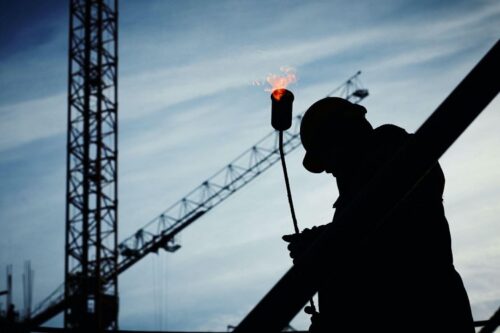
5.17.23 – ISHN
Opposed to other industries, the construction industry is made up largely of an aging workforce with the percentage of employees 50 years and older doubling from 2003 to 2020. It’s actually a major threat to the industry, as employees are “aging out” faster than they can be replaced.
Beyond that, it’s become even more important to consider new and effective safety measures for the aging population in the industry. If you’re in a leadership role, it’s essential to implement safety considerations that take age into account, so you can keep your employees safe on the job.
The risks associated with older employees
It’s no secret that the construction industry has its fair share of risks. According to the National Safety Council, construction accounts for the most workplace deaths. It’s the responsibility of each construction company to have policies in place to protect employees of all ages. But, special considerations might need to be made for older individuals on the job thanks to some of the increased risks they face.
For example, workplace injuries are more likely to occur with age. Even though older employees typically have more experience that guides their safety knowledge, other factors increase their risk of getting hurt or sick, including:
- Chronic health conditions;
- Muscle aches and pains;
- Vision problems;
- Exhaustion.
While slips and falls are nothing new to the industry, older employees might be more prone to experiencing them, and unfortunately, they have dangerous impacts. If an older employee falls on the job, they may experience broken bones (which take longer to heal with age), head injuries, and even traumatic brain injuries (TBIs). Some of the common symptoms of TBIs include:
- Headaches;
- Nausea or vomiting;
- Sensory problems;
- Dizziness;
- Loss of consciousness.
Head injuries can have long-term effects, too. The average person who suffers a concussion might be three times more likely to commit suicide — even years later.
Older employees might end up moving slower than their younger counterparts, too. In an industry as fast-paced as construction, they could start to feel extra stress and pressure as they try to “keep up”. Unfortunately, rushing can lead to more mistakes and even greater risks. By constantly trying to keep pace, older employees may burn out faster, leading to other mental health conditions like anxiety or depression.
Improved safety policies
Although there are myriad risk factors older employees may experience at a construction site, there are plenty of precautions employers can put in place to protect all of their employees, including their older employees. These practices include:
Investing in employee training: It’s not always enough to post signs or give out handbooks. It’s also not enough to assume that training your employees on safety practices one time means they’re “covered” for the length of a career. Frequent, consistent employee training will reduce human error and remind everyone what it takes to stay safe on the job.
Providing on-the-job resources for help: Equipping your employees with the safety tools and protective gear they need should always be a top priority. However, it’s also important that they have access to things like first aid kits and that there’s a process in place for contacting emergency services if they need help.
Hiring qualified candidates for all positions: While the right training can help the greenest workers stay safe on the job, you’ll keep everyone even safer by hiring individuals with experience, and who have worked on job sites with extensive safety standards before. If you want to hire someone new to the industry, invest in additional training or consider letting them work underneath a more experienced employee for a while.
There’s no “one-size-fits-all” job on a construction site. A 65-year-old employee might not be as comfortable on a ladder as a 25-year-old, but there are other things he’ll excel at that are also safer.
You might also want to consider changing your factory layout design, if necessary. Take a look at your existing layout. Is it too cluttered and cramped? Are things stored efficiently and securely? Can machinery move around freely without the risk of injuring someone? By creating a more cohesive space, you’ll reduce everyone’s risk of getting hurt on the job.
A better work environment
Perhaps the most important thing you can do for your older employees is to foster a workplace environment that’s focused on health and safety for all ages. For example, consider offering more flexible schedules. Flexible scheduling can improve the work-life balance of your employees, which is integral in boosting the mental health of your employees.
It’s also important to encourage frequent breaks on the job. Doing so will help to fight fatigue and will encourage your employees to take care of themselves. It will also help to reduce the risk of burnout and lower the chances of human error at work. Less human error means fewer accidents and injuries!
If you know some of your older employees have chronic conditions or health problems, create individual strategies that will keep them safe and healthy while allowing them to work. That might include shortened hours or more accessible features at work, like ramps and rails.
Finally, take the time to discuss necessary accommodations with your employees. It’s okay to put new policies and changes in place to ensure every single person on a job site is protected. Keeping your older employees safe is important and worth it for your business. They’re the best mentors for new, young employees, and they bring years of experience and knowledge to every job they take on.
